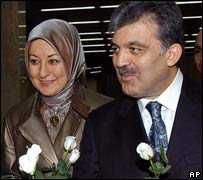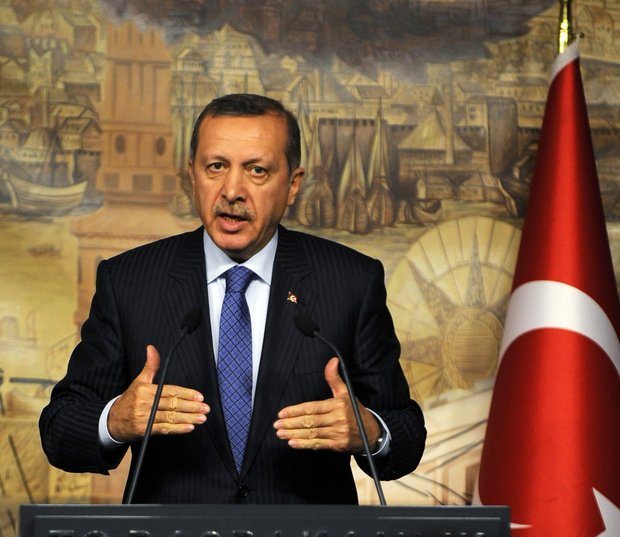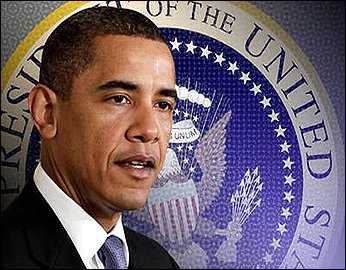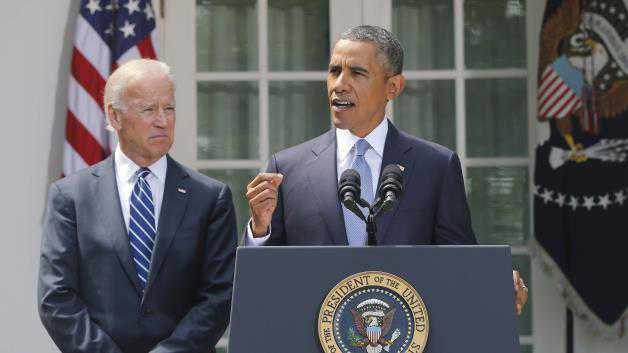Many reputable sources account to 1.5 – 1.6 million of Armenian population within Ottoman Empire before WW1. Only the number provided by the Armenian Istanbul Patriarchate in 1912 is way above these general numbers, being around 2 million. Oddly, Patriarchate’s number is the only one taken into account in Toynbee’s Blue
Book and in the declaration published by Boghos Nubar and A. Aharonian before Paris Peace Conference.
Patriarchate’s 2 million figure highly contradicts with the detailed population numbers provided by British H.F.B Lynch and French Vital Cuinet for the periods ending 19th century and beginning 20th century. When we look at the numbers given by Lynch and Cuinet, it’s easy to see that Patriarchate’s number for before WW1 is nearly 100% higher than the British and French sources for the periods ending 19th century and beginning 20th century which is nearly impossible considering populations can not rise by that much for over only 15 to 20 years. Also the number provided by Armenian Patriarchate for Muslim population in Ottoman Empire in 1912 is 20-30% lower than the other reputable sources.
In addition to sources of Lynch and Cuinet, many other reputable sources show that Armenian population with in Ottoman empire before WW1 was around 1.3-1.6 million.
Hence in Lozan Peace Conference, 2 million figure introduced by the Armenians had been found quite an exaggeration and 1.6 million figure by David Magie had been taken into account.
Another disinformation Ottoman Empire had been a victim of during WW1 about Ottoman Armenians is the number of Armenians that had been killed in Anatolia. It’s almost like this number had been introduced to an auction in last 100 years. ( Numbers given by the Red Cross is between 600.000 and 800.000, numbers given by Morgenthau is 1 million and today Armenian Diaspora claims the number to be around 1.5 to 2 million.
Some historians that support the Armenian Genocide allegations ignore this debate by saying that; ‘Numbers are meaningless, it’s the crime that matters’. There is no legal document that highlights or clarifies how many Armenians had died or had been killed under what conditions during 1915 phenomenon. Today the main allegation is that most Armenians (1.5 million to 2 million) had faced ethnic cleansing in Anatolian camps or North Syrian camps.
However when we look at legal documents with European or United Nations origins for the period commencing WW1 and ending 1924, we see just the opposite of these allegations. If we take into consideration the documents of Armenian Revolutionary Federation (Dashnaktsutiun) as well as Czardom Russia and Bolshevik Russia documents together with the above mentioned documents, we can see the mobility of Armenians together with how they ended up and their fates.
The most important official document indicating the ‘Armenian Armed Movements’ before WW1 is the 1910 speech given by the Armenian Revolutionary Federation ideologist Mikail Varangian (aka Warangian) in Copenhagen during Second Socialist International.
The report shows that Dashnaktsutiun had organized and formed armed gangs in almost everywhere in Anatolia by adopting a terrorist movement. The report is in Belvedere archives.
Two other sources admitting the ‘Armenian Armed Movements’ that were seen long before WW1 are as follows:
1- Manifesto of First Prime Minister Hovhannes Katzhaznouni of Yerevan Dashnak Goverment published in Bucharest
2- The article of First USA Ambassador of Armenia Garekin Pastırmacıyan called ‘Why Armenian Should Be Free – Boston 1918′
The number of Armenians who had joined in these armed forces were around 200.000 as stated by Armenia Delegation Chairman Avetis Aharonian and World Armenians Delegation Chairman Boghos Nubar in Paris Peace Conference in 1919.
The act of organizing and arming these 200.000 Armenians was naturally not something that Armenians could manage on their own initiatives financially and technically. The Armenian armed gangs were supported directly by Czardom Russia, Britain and France before WW1.
Two years before WW1 on 26th November, 1912, the confidential report sent by Russian Ambassador Zinovyev in İstanbul to Minister of Foreign Affairs of Russia S. D. Sazanov included the following (Russian State Archives, Politics Department, nr 117/293):
‘According to the information provided by our Van, Beyazıd, Erzurum, Trabzon Consulates, the Armenians living in these cities are on Russian side and are waiting for our armies’. [RussianStateArchives/political section n.117/293]
As paralel to what stated above, the riots of Armenian armed gangs resulted in Russians occupying Van at the beginning of WW1.
Van tradegy was described as follows in the telegraph sent by German Ambassador in İstanbul Hans Von Wangenheim to Ministery of Foreign Affairs of Germany on 10th May, 1915:
‘Armenians in the city of Van started rioting and started to attack Muslim villages and the castle. The Turkish headquarters in the castle had lost 300 soldiers and as a result of the street combats for days, the rebels took over the city. Russia occupied the city on 17th May, 1915. Armenians sided with Russia afterwards and started to massacre Muslims. Approximately 80.000 Muslims around Bitlis started to flee. [Wangenheim,Deutschisches und Armenien 1914-1918,Postdam 1919 p.65]
The massacres of Muslims by Armenians were also documented in Czardom Russia archives. A report sent by Russian Commander Brigadier Bolhovitinov in Caucasus to headquarters on 11th December, 1915 included the following:
‘The Armenian Volunteer Legions had killed Muslims brutally with racist motives.’ [Brigadier General Leonid Bolhovitinov’s Report,1915,Russian Military History Archives (RGVIA) fond2100,list1,folder557,p.303-307]
While these tradegies were taking place in East Anatolia, Russian, British and French were helping Armenians getting armed in East Mediterranean.
The telegraph dated 5th November, 1914 sent by Francois George Picot and French Middle Ambassador Defrance of Egypt stated:
‘Greece accepted to send 15.000 rifles and 2 million bullets to the volunteer legions in Syria and in a possible intervention of France in Syria there are 30.000 – 35.000 volunteers readily avaliable to side with France in the region’. [Guerre Mondiale Turquie Vol.867 XCIII-document 237,Legion d’Orient 1914-1918]
The report sent by the French Admiral in Syrian shore to the British military headquarters in Egypt indicated that the riot in Cilicia had lasted for over one month as of 28th May, 1915 and a total of 300 Turkish gendarmes had been killed.
[U.K.Archives W.O. 157/691/8, 28 April 1915,Cairo]
The memorandum sent by Russian Ambassador to British Ministry of Foreign Affairs on 24th Feb, 1915 expressed that an Armenian from Cilicia had contacted Kont Warentzoff Dachkoff in Caucasus and had indicated that they had gathered a force of 15.000 to raid the transportation lines of the Turkish Army but that they had not had enough arms and arsenal to perform and those could have been provided by British and French over through Alexandretta Harbour. [U.K. Archives F.O. 371/2484 No.22083,15 Feb.1915]
As can be seen clearly from documents and information like the ones mentioned above, Armenian Dashnak Forces were committing war crimes behind the battles when Ottoman Empire called all men to the army to fight in Çanakkale, Palestine and Caucasus battles. This situation resulted in Ottoman Empire deciding to relocate Armenians in war zones as well as Armenians in Anatolia who were working for Dashnak Party to Syrian region.
The ones claiming that there is a genocide are accusing Ottoman Empire of ethnically cleansing 1.5 million Armenians in the Empire with the application of this relocation decision dated 24th April, 1915.
Many official documents were obtained in relation to the fate of Armenians forced to relocate during WW1 and after which were highly contradicting with the idea of a genocide.
Although Ottoman Empire decided to relocate Armenians in above mentioned locations, Batumi Ambassador of Britain P. Stevens indicated that many Armenians were not even subject to obligatory relocation and were taken away by Russians to Caucasus in the report he sent to London on 25th Feb, 1916. [Halaçoğlu,Ermeniler:Sürgün Ve Göç,p.84-85]
[Photo: Armenian Refugees From Turkey arrived in Russia,1914– Harold Buxton;Travel & Politics in Armenia,1914]
This is also confirmed in the report of British Lord Major Found which he wrote about 1915. 250.000 Armenians moved to Caucasus Armenia from Anatolia fighting against illnesses and war conditions.
250.000 figure was confirmed in the report sent by Armenian National Delegation Chairman Boghos Nubar to Ministry of Foreign Affairs of France in addition to the figure of 40.000 Ottoman Armenians being in Iran.
When we can reasonably confirm that 250.000 Ottoman Armenians arriving at Caucasus and 40.000 Ottoman Armenians arriving at Iran at the beginning of WW1, we also obtain some other related information from US National Archives: American Counsel J. B. Jackson of Aleppo indicated in the letter he sent to American Ambassador Henry Morgenthau in İstanbul(8February1916) that 486.000 Armenians were located in the camps between Aleppo and Damascus and there were two charities helping the migrants. [U.S. Archives State Department Record Group 59,867.48/271]
[—The ones claiming that there was a genocide can not answer the question of why Ottoman Goverment allowed American charities or American ambassadors to help the Ottoman Armenian refugees located in camps between Aleppo and Damascus, locations which were under the control of Ottoman Goverment back then.—]
We can provide more detailed information related to Armenian refugees in Caucasus and Syria from documents obtained after WW1.
WW1 ended with Mondros Armistice signed on 30th October, 1918 for Ottoman Empire. In 1918 after the war when the Bolshevik Revolution was over, the massacres of Muslim civilians in East and South East Anatolia by Armenian Dashnak Goverment which was continuing to fight, reached the maximum possible. In the same year, Cilicia was
Occupied by the French (on 24th December, 1918). It is seen that after Cilicia was occupied by the French, some Armenian refugees in Syria were relocated here.
[Photo:George R. Swain(Adana/Turkey). Francis W. Kelsey and Near East Expedition of 1919-1920]
However we obtain the exact number of Armenians living under Ottoman Empire after WW1 from the official document presented to the US by İstanbul American High Council. This document is in US National Archives and was confirmed by İstanbul Armenian Patriarchate.
According to this official document, there were 624.900 Armenians living under Ottoman Empire in 1921. We also know that apparently around 200.000 were located in Cilicia (in Adana, Antep, Maraş etc.) which was under French control.
[U.S. Archives NARA, T 1192 R2.860J01/395]
This document shows that there were 624.900 Armenians under Ottoman borders after WW1 until these Armenians were refugees again.
There is also another visual document related to Armenians obtained for these years. The photo of Armenian refugees living in Novorossisk (Black Sea shore – South Russia) taken by G. P. Lloyd is in Frank Carpenter archives and it was taken in 1920. Unfortunately we can not obtain any information related to the number of Armenian refugees in Novorossik.
It is discussed in the Near East Relief Report dated 31st December, 1921 that around 500.000 Armenian refugees in Dashnak Goverment in Yerevan (which was in Caucasus) were being provided aid.
[Report Of The Near East Relief,For The Year Ending 31 December 1921, Washington Government Printing office 1922]
The exact number of Armenian refugees who went to Armenia during the Turkish – Armenian War which started with WW1 and ended with Gümrü Treaty signed on 3rd December, 1920 and Bolshevik Russians occupying Armenia on 4th December, 1920, was provided by Fridjof Nansen, Refugees High Commissar of League of Nations.
Fridjof Nansen indicated that 400.000 of the 1 million population of Yerevan Armenian Goverment was comprised of refugees who came during the war as answer to the question of an Indian representative during the 8th meeting of League of Nations held on 19th October, 1928.
Even if Fridjof Nansen did not give any indications related to the number of Armenians in whole Caucasus or South Russia, he definitely indicated that 400.000 Ottoman Armenians moved to Caucasus Armenia.
Meanwhile the Ankara Treaty signed between France and Ankara government resulting in France withdrawing from Cilicia also resulted in 200.000 Armenians leaving the region (who were located there before) and migrating to other countries without ever coming back. 500.000 Muslims being massacred by Armenian Armed Forces in Anatolia made it impossible for the Armenians and Turks living together.
The document about the ‘Armenian Population Around The World’ dated 1922 and included in US National Archives gives information about the Armenian emigration that started with the French withdrawing from Cilicia. We can follow the refugee movements of the 624.900 Armenians in Ottoman Empire beginning 1921 with the help of the activities of League of Nations.
[U.S. Archives, NARA 867.4016/816.Janunary 10,1923]
This refugee movement was also indicated in the declaration prepared by Armenian National Delegation for Lausanne Treaty on 2nd February, 1923.
[League Of Nation,Armenia, Geneva, February 2nd.1923, 0.153. M.56 1923 VII]
CONCLUSION:
From the beginning of WW1 to 1921, there were 624.900 Armenians in Ottoman Empire, at least 400.000 in Yerevan Armenia and finally at least 40.000 in Iran. Unfortunately we can not conclude as to how many Ottoman Armenians immigrated to South Russia, Georgia, Egypt, Greece, USA or Europe.
However the most certain thing we get out of all these documents is that the Armenian population which was around 1.6 million before WW1 was at least around 1.1 million after WW1.
[The Republic Of Armenia–A Memorandum , On The Recognition Of The Government Of The Republic Of Armenia, Submitted By The Special Mission Of The Republic Of Armenia To The United States– Presented By Mr. Lodge,November 10,1919, Washington,Government Printing Office 1919]
GÖÇ EDEN OSMANLI ERMENİLERİNİN AKİBETİ VE SOYKIRIM İDDİASI
Birinci Dünya Savaşı öncesinde Osmanlı İmparatorluğu sınırları içinde yaşayan Ermenilerin sayıları hakkında verilen ciddi rakamların çoğunluğu 1.5-1.6 milyon arasındadır.Sadece İstanbul Ermeni Patrikhanesi’nin 1912 yılında verdiği rakam , bu genel rakamların çok üzerinde, 2 milyon u bulmaktadır.Patrikhane’nin bu değerleri, hem Toynbee’nin Mavi Kitap’ı ve hemde Paris Barış Konferansı öncesi, Boghos Nubar ve A. Aharonian iklisinin yayınladığı bildiride kullanılır.
Patrikhane’nin bu 2 milyon rakamı , 19. yy sonu-20.yy başı itibariyle İngiliz H.F.B Lynch ve Fransız Vital Cuinet’in verdiği detaylı nüfus değerleri ile oldukça çelişkilidir.Lynch ve Cuinet’in verdiği rakamlara bakıldığında, Patrikhane’nin verdiği nüfus değerlerinin hemen hemen %100 fazla olduğu anlaşılır ve 15-20 yıl içinde hiçbir insan populasyonu doğal yollardan bu kadar artamaz.Ayrıca İstanbul Ermeni Patrikhanesi’nin 1912 yılında, Müslümanlara ait nüfus sayılarında ise %20-30 oranında bir eksilme görülmektedir.
Lynch ve Cuinet’e ek olarak birçok kaynakta da, Birinci Dünya Savaşı öncesi için Osmanlı sınırlarındaki Ermenilerin sayısı
1.3-1.6 milyon civarında verilmektedir.
Keza Lozan Barış Konferansı’nda da , Ermeni Patrikhanesi’nin 2 milyon takamı çok abartılı bulunarak, David Magie tarafından hazırlanan ve Ermenilerin sayısını 1.6 milyon olarak veren nüfus istatistiği kabul edilmiştir.
Birinci Dünya Savaşı’nda, Osmanlı Ermenileri hakkında bilimsel olmayan bilgi dezenfermasyonunun bolluğu içinde karşımıza çıkan diğer bir konu ise,Birinci Dünya Savaşı boyunca hayatını kaybeden Anadolu Ermenileri’nin sayısıdır.Bu konu geçen 100 yıl içinde sanki açık arttırmaya çıkmış gibidir. (Kızılhaç 600-800 bin rakamı, Morgenthau 1 milyon, bugünün Ermeni Diasporası ise 1.5-2 milyon kayıptan bahseder)
”Ermeni Soykırımı” iddiasında bulunan bazı tarihçiler, bu sayılar hakkında ”ne kadar insanın öldüğünün ne önemi var,önemli olan suçun kendisidir” diyerek, konuyu geçiştirmektedirler.1915 fenomeni içinde ne kadar Osmanlı Ermenisi’nin hangi koşullar altında öldüğü ya da öldürüldüğünün hukuki bir belgesi yoktur.Bugün itibariyle genel iddia, 1.5 (ya da 2) milyon Ermeni’nin,
Anadolu’da veya Kuzey Suriye’deki kamplarda etnik temizliğe tabii tutulduğu üzerinedir.
Halbuki 1.Dünya Savaşı’ndan 1924 lere kadar olan,Avrupa ve Birleşik Devletler kaynaklı resmi belgeler bize bu iddiaların tam tersi şeyleri söylemektedir.Bu belgelere , Ermeni Devrimci Federasyonu’na (Dashnakzutiun) ait bazı belgeler ile Çarlık Rusyası ve Bolşevik Rusya’ya ait belgeleri de eklediğimizde, Osmanlı Ermenileri’nin hareketliliğini ve akibetlerini genel bir kesinlikle görüyoruz.
1.Dünya Savaşı öncesi, Ermeni Silahlı hareketlerinin tarih ititbariyle en önemli ve resmi belgesi, Ermeni devrimci Federasyonu’nun (Dasnakzutiun) ideolojisti Mikail Varangian(or Warangian) ın 1910 yılında Kopenhag’taki 2. Sosyalist İnternasyonal’e verdiği rapordur.
Raporda bizzat, Dashnakzutiun’un Anadolu’nun hemen her yerleşiminde örgütlendikleri ve silahlı çeteler oluşturarak, terörist eylem biçimini benimsedikleri ifade edilmektedir.Bu rapor Belvedere arşivlerindedir.
1.Dünya savaşı’ndan çok önce başlayan Ermeni Silahlı organizasyonlarını itiraf eden diğer iki kaynak ise, Erivan Taşnak Hükümeti’nin ilk Başbakanı Hovhannes Katzhaznouni’nin Bükreş’te yayınlanan manifestosu ve Ermenistan’ın ilk Abd Büyükelçisi Karekin Pastırmacıyan’ın ”Ermenistan niçin özgür olmalı”(Why Armenia Should Be Free-Boston 1918) yazılarıdır.
Keza bu silahlı hareketlere katılan Ermenilerin sayısı, hem 1919′da Paris Barış Konferansı’nda Ermenistan Delegasyon Başkanı Avetis Aharonian ve hem de Dünya Ermenileri Delegasyon Başkanı Boghos Nubar’ın söylediği üzere 200.000 civarındadır.
Doğal Olarak bu 200.000 kişilik silahlı Ermeni Çetelerin silahlandırılması ve yönetilmesi eylemi, Ermenilerin kendi insiyatifleriyle gerçekleştirebilecekleri teknik ve finansal bir eylem değildir.Ermeni silahlı çeteleri 1.Dünya Savaşı öncesinde bizzat Çarlık Rusyası,İngiltere ve Fransa tarafından desteklenmiştir.
Keza savaştan 2 yıl önce, 26 Kasım 1912 tarihinde, Rusya’nın İstanbul Büyükelçisi Zinovyev’in Rusya Dışişleri Bakanı S.D. Sazanov’a gönderdiği gizli raporda( Rusya Devlet Arşivi,Siyasi Bölüm,nr 117/293);
”Van;Beyazıd;Erzurum,Trabzon konsolosluklarımızın bildirdiklerine göre, bu vilayetlerdeki Ermenilerin hepsi Rusya tarafındadırlar ve bizim ordularımızı bekliyorlar” denilmektedir.
Bunu gelişmeleri takiben 1.Dünya Savaşı’nın başlangıcında, Ermeni silahlı çetelerinin isyan faaliyeti Rusların Van İlini işgal etmesiyle sonuçlanır.
İstanbul Alman Büyükelçisi Hans von Wangenheim tarafından Alman Dışişleri Bakanlığı’na gönderilen 10 Mayıs 1915 tarihli telgrafta, ”Van Trajedisi” şu şekilde anlatılır:
”Van vilayetindeki Ermeniler ayaklanmışlar,müslüman köylere ve kaleye saldırıya geçmişlerdir.Kaledeki Türk garnizonu 300 kayıp vermiş,günlerce devam eden sokak muharebeleri sonunda şehir asilerin eline geçmiştir. 17 Mayıs 1915′te de Van Ruslar tarafından işgal edilmiştir.Ermeniler Rus tarafına geçmiş ve müslümanları katle başlamışlardır.Bitlis istikametinde 80.000 müslüman kaçmaya başlamıştır.”
Ermeni çetelerinin katliamları Çarlık Rusyası arşivlerinde de belgelenmiştir.Kafkas Cephesinde görevli Rus komutan Tuğgeneral Bolhovitinov, 11 Aralık 1915′te karargaha gönderdiği raporda;
”Ermeni Gönüllü Birliklerinin ırkçı duygularla Müslüman Halka karşı vahşi katliamlar yaptı” der.
Doğu Anadolu’da bu trajedi yaşanırken, Doğu Akdeniz’de Rus-İngiliz ve Fransızlar tarafından bölgedeki Ermeniler silahlandırılmaktadır.
Francois George Picot ve Fransa Mısır Orta Elçisi Defrance’ın 5 Kasım 1914 tarihini taşıyan telgrafta;
”Yunanistan’ın Suriye’deki gönüllü kuvvetlere 15.000 tüfek ve 2 milyon mermi yollamayı kabul ettiği ve Fransa’nın Suriye’ye müdahelesi durumunda, burada 30-35.000 gönüllünün bulunduğu” ifade edilmektedir.
Mısır’da ki İngiliz askeri karargahına Suriye kıyısındaki Fransız Amiralinden gelen rapor;
”28 Nisan 1915 tarihine kadar Zeytun’daki (Cilicia) isyan bir aydır devam etmektedir ve toplam 300 Türk jandarması öldürülmüştür.”
Rus Büyükelçisi’nin İngiliz Dışişleri Bakanlığı’na yazdığı 24 Şubat 1915 tarihli memorandumda ;
”Zeytun’lu bir Ermeni’nin Kafkasya’da Kont Warentzoff_Dachkoff ile temas kurduğu, Türk ordularının ulaşım hatlarına baskın yapmak üzere 15.000 kişilik bir kuvvet topladıkları ancak silah ve cephanelerinin yeterli olmadığı, ingiliz ve Fransızlar tarafından İskenderun Limanı üzerinden bunun yapılabileceği …” anlatılır.
Buna benzer birçok belge ve yazışmadan da anlaşılacağı gibi, Osmanlı İmparatorluğu WW1 Savaşı başlangıcında Çanakkale, Filistin, ve Kafkasya cephesinde savaşmak üzere ülkedeki erkekleri askere almışken, Ermeni Taşnak birlikleri cephe gerisinde savaş hukukuna aykırı eylem ve katliamlara girişmişlerdir.Bu durum Osmanlı Devleti’nin savaş bölgelerindeki ermeniler ile tüm Anadolu’daki Taşnak Partisi ile bağlantılı Ermenilerin Suriye bölgesine tehciri kararını almasıyla sonuçlanmıştır.
İşte ‘’soykırım” iddilarını öne sürenler 24 Nisan 1915 tarihli bu tehcir kararı uygulamasıyla 1.5 milyon ermeninin, Osmanlı Devleti tarafından etnik temizliğe tabii tutulduğunu iddia etmektedirler.
1.Dünya Savaşı esnasında ve sonraki yıllarda tehcire maruz kalan Ermenilerin akibeti ile ilgili olarak, ” soykırım” iddialarının aksine , çok farklı resmi belgeler ortaya çıkmaktadır.
Ermenilerle ilgili olarak Osmanlı devleti’nin tehcir kararı almasına rağmen, ingiltere’nin Batum Konsolosu P. Stevens’ın Londra’ya gönderdiği 25 Şubat 1916 tarihli raporda; çok sayıda Ermeninin zorunlu göçe tabii tutulmadığı ve Ruslar tarafından Kafkasya’ya götürüldüğü ifade edilmektedir.
Bu durumu İngiliz Lord Major Found’un 1915 yılına ait raporuda tasdik eder. 250.000 Ermeni bu yıllarda Türkiye’den Kafkasya Ermenistan’ına geçmiş ve savaş koşullarında hastalıklarla mücadele etmektedirler.
Aynı bilgiyi Ermeni Milli Delegasyon Başkanı Boghos Nubar’ın Fransız Dışişleri Bakanlığı’na gönderdiği yazıda 250.000 rakamı teyit edildiği gibi İran’da da 40.000 Osmanlı Ermenisinin bulunduğu bilgisi verilir.
1. Dünya Savaşı’nın ilk yıllarında Kafkasya’ya 250.000, İran’a 40.000 Ermeni’nin gittiği bilgisine ulaşırken başka bir bilgi de Amerikan Ulusal Arşivlerinden çıkıyor.
Amerikan Halep Valisi J.B. jackson’un 8 Şubat 1916′da Amerikanın İstanbul Büyükelçisi Henry Morgenthau’ya gönderdiği raporda, Halep ve Şam arasındaki bölgede Osmanlı’nın tehcir ettiği 486.000 Ermeni göçmenin kamplarda bulunduğu ve iki yardım kuruluşu tarafından bu göçmenlere yardım edildiği bildiriliyor.
— Bu rapora baktığımızda ‘’soykırım” iddiasını ileri sürenlerin, o yıllarda Osmanlı kontrolündeki Halep ve şam bölgesinde, Ermeni mültecilere yardım için niçin Amerikan Yardım Kuruluşlarına ve Amerikan Elçisine izin verildiği sorusuna cevapları yoktur.—
Hem Kafkasya ve hemde Suriye’deki Ermeni mülteciler hakkındaki daha detaylı bilgilere savaş sonrasında ortaya çıkan bilgilerden öğreniyoruz.
Osmanlı İmparatorluğu için 1.Dünya Savaşı 30 Ekim 1918 de imzalanan Mondros Mütarekesi ile sona erer. 1918′de savaş bittiğinde, Bolşevik Devriminden sonra savaşa devam eden Ermeni Taşnak Hükümeti’nin Doğu ve Güneydoğu Anadolu’da sivil halka karşı gerçekleştirdiği katliamlar doruk noktasına çıkar.Aynı yıl içinde Çukurova (cilicia)
Bölgesi Fransa tarafından işgal edilir.(24Aralık1918).Çukurova’nın (Cilicia) Fransızlar tarafından işgalinden sonra, Suriye’deki Ermeni göçmenlerin bir bölümünün buraya yerleştirildiğini anlıyoruz.
Ama 1. Dünya Savaşı sonrası Osmanlı İmparatorluğu içindeki Ermenilerin tam sayısını, Amerikan Ulusal Arşivlerinde bulunan; Birleşik Devletlere, İstanbul Amerikan Yüksek Komisyonunca sunulan ve İstanbul Ermeni Patrikhanesi tarafından da onaylanan resmi belgeden anlıyoruz.
Bu belgeye göre 1921 yılında Osmanlı İmparatorluğu sınırları içinde 624.900 Ermeni yaşamaktadır.Ve görünen o ki, 200.000 kadar Ermeni Fransız kontrolündeki Cilicia (Adana-Antep-Maraş vs) bölgesine yerleştirilmiştir.
Bu belge ile , 1. Dünya Savaşı sonrası , Osmanlı sınırları içindeki Ermenilerin, tekrar göçmen durumuna düşmesine kadar ki tam sayıları 624.900 dür.
Bu yıllarda ortaya çıkan diğer bir fotoğrafik belge de 1920 yılına ait Frank carpenter arşivinde bulunan ve G.P. Lloyd tarfından çekilen, Novorossik’teki(Karadeniz Kıyısı-Güney Rusya) Ermeni Mültecilere ait fotoğraflardır.Malesef Novorossik’teki Ermeni Mültecilere ait sayısal bir değere ulaşamıyoruz.
Kafkasya’da Erivan Taşnak Hükümeti sınırları içindeki mülteci sayısı hakkında ise, 31 Aralık 1921 tarihli Near East Relief raporunda, 500.000 kişiye yardım edildiğinden bahsedilir.
1.Dünya Savaşı ile başlayıp 3 Aralık 1920 deki Gümrü Antlaşması’ na kadar süren ve ertesi gün, 4 Aralık 1920′de Ermenistan’ın Bolşevikler tarafından işgal edilmesiyle tamamen son bulan Türk-Ermeni Savaşı boyunca, Ermenistan’a giden Ermeni Mültecilerin tam sayısını, Milletler Cemiyeti (League of Nations) Mülteciler Yüksek Komiseri Fridjof Nansen net olarak söylüyor.
Milletler Cemiyeti’nin 19 Ekim 1928 tarihli sekizinci oturumunda Hindistan temsilcisinin sorusuna verdiği cevapta , ”Erivan Ermeni Hükümeti’nin 1.000.000 luk nüfusunun 400.000 inin savaş boyunca gelen mültecilerden oluştuğunu söylüyor.
Bu belgeden bütün Kafkasya ve Güney Rusya’daki Ermenilerin sayısını öğrenemesek bile, Ermenistan’a 400.000 Osmanlı Ermenisi’nin geçiş yaptığını öğreniyoruz.
Diğer taraftan Fransa’nın 20 Ekim 1921 tarihinde Ankara Hükümeti ile yaptığı anlaşma ile , Fransızların Çukurova’dan (Cilicia) çekilmesi, Çukuroava’ya geri dönen 200.000 kadar Ermeni’nin, geri dönmemek üzere başka ülkelere mülteci olarak yerleşmesi sonucunu doğurdu.Anadolu’da Ermeni Silahlı Birlikleri tarafından öldürülen 500.000 den fazla Müslüman olması, artık Ermeniler ile Müslümanların birlikte yaşayamayacağı sonucunu doğuruyordu.
Fransızların Çukurova’dan çekilmesiyle başlayan Ermeni göçü hakkında, Amerikan Ulusal arşivlerindeki 1922 tarihli , ”Dünya’daki Ermeni Populasyonu’ nu gösteren belge, bize bu konuda bilgi veriyor. 1921 yılı başlarında Osmanlı sınırları içindeki 624.900 Ermeni’nin, Milletler Cemiyeti’ninde faaliyetleriyle ilk mülteci hareketlerini bu şekilde izliyoruz.
Bu hareketlilik, 2 Şubat 1923 tarihinde, Ermeni Milli Delegasyonu’nun, Lozan Konferansı için hazırladığı bildiride de yine teyit edilir.
SONUÇ:
Dünya Savaşının başlangıcından 1921 yılına kadar ;
Osmanlı İmparatorluğu’nun sınırları içinde 624.900 , Erivan Ermenistan’ınanda en az 400.000, İran’da en az 40.000 Osmanlı Ermenisi bulunmaktadır.1914 ile 1921 yılları arasında, Güney Rusya,Gürcistan,Mısır,Yunanistan,Abd ve Avrupa’ya ne kadar Osmanlı Ermenisi’nin göç ettiği hakkında net bir rakama ulaşamıyoruz.
Ama bu belgelerden öğrendiğimiz en kesin şey, savaş öncesinde sayıları 1.6 milyon olan Osmanlı Ermenileri’nin , savaş sonunda en az 1.1 milyonunun hayatta olduğudur.
05 Mart 2009 Perşembe
Photo Galerie
Armenian Genocide Tale
Photo Galerie 1
Armenian Genocide Tale
Photo Galerie 2
11 Şubat 2009 Çarşamba
The Report of Emory Niles & Arthur Surherland in U.S. National Archives
Captain Emory Niles and Mr. Arthur Sutherland were Americans ordered by the United States Government (in 1919) to investigate the situation in eastern Anatolia. Their report was to be used as the basis for granting relief aid to the Armenians by the American Committee for Near East Relief.
U.S. National Archives 184.021/175
Pls,click to image for read!
Abd Ulusal Arşivleri’ndeki Emory Niles ve Arthur Sutherland Raporu
Amerikalı Yüzbaşı Emory Niles ve Arthur Sutherland,Amerika Birleşik Devletleri Hükümeti tarafından,Doğu Anadolu’nun durumunu araştırmak üzere görevlendirildi.
Bu rapor,Amerikan Yakın Doğu Yardım Kuruluşu (Near East Relief) tarafından, Ermenilere yardım aşamasında referans olarak kullanıldı.
Amerika Ulusal Arşivleri 184.021/175
IV. Mezalimler
Bizim araştırma konumuzla direkt ilgili olmamasına rağmen bizde iz bırakan çok çarpıcı bir gerçek var ki o da, Bitlis’ten Trabzon’a kadar geçtiğimiz tüm noktalarda, diğer bölgelerde Türkler tarafından Ermeniler’e karşı işlenen suçlar ve yapılan zulümlerin aynısının bu bölgelerde Ermeniler tarafından Türkler’e yapılmış olmasıdır. İlk başta bize anlatılan hikayelere kuşkulu yaklaşmakla birlikte, görgü tanıklarının ifadelerindeki fikir birliğini, kendilerine yapılan yanlışları gözle görülür bir istekle anlatmalarını, Ermeniler’e karşı duydukları bariz nefreti ve herşeyden daha önemlisi, ortadaki somut kanıtları gördükten sonra şu gerçekler hakkında ikna olduk:
1- Ermeniler Müslümanlar’a büyük çaplı olarak çeşitli zalimliklerde bulunmuşlardır.
2- Köylerde ve kasabalarda meydana gelen yıkımlardan büyük oranda Ermeniler sorumludur.
Ruslar ve Ermeniler ülkeyi 1915 ve 1916 yıllarında hatırı sayılır bir zaman birlikte işgal etmişlerdir ve bu süre içinde çok az düzeyde karışıklık çıkmış olmasına rağmen Ruslar’ın verdiği zararlar şüphesizdir. 1917 yılında Rus ordusu dağılmış ve Ermeniler’i yönetim ve kontrolde kendi başlarına bırakmıştır. Bu dönemde başıbozuk Ermeni askeri çeteleri, ülkeyi amaçsızca dolaşıp köyleri yağmalamışlar ve Müslüman sivil halkı katletmişlerdir. Türk ordusunun Erzincan, Erzurum ve Van’da ilerlemesi üzerine dağılan Ermeni ordusunun düzenli ve düzensiz birliklerini oluşturan tüm askerleri ise bunun arkasından bölgedeki Müslüman halkın mal mülklerine zarar vermişler ve bölge halkına türlü zulümler yapmışlardır. Bunun sonucunda, geriye ülke halkının eski nüfüsunun yaklaşık olarak sadece dörtte biri kalmış ve ülkede bulunan yapıların gene yaklaşık olarak sekizde yedisi talan edilmiştir. Tamamen harabeye dönmüş olan bu ülkedeki en acıklı olay ise Ermeniler’den nefret eden Müslümanlar’ın bu nefretinin, iki ırkın şu gün itibariyle aynı bölgede birlikte yaşama olasılığını tamamen ortadan kaldırmasıdır. Müslümanlar, bir Ermeni Hükümeti’nin boyunduruğu altında yaşamaya zorlanırlarsa savaşacaklarını beyan etmişler ve bize de bu tehditlerini gerçekleştirecek gibi görünmüşlerdir ki bu görüşümüz, karşılaştığımız tüm Türk görevliler, Amerikan görevliler ve İngiliz görevliler tarafından paylaşılmıştır.
Durumu daha da kötüleştirici diğer bir konu ise sınır ötesindeki gidişattır. Mültecilerin şikayetlerinin ne kadarının ne ölçüde doğru olduğunu bilmemize ya da Müslümanların bu duruma ne ölçüde sebebiyet verdiklerini yani gerçekte Ermeniler’e karşı organize bir direniş göstermeleri yüzünden bu durumdan sorumlu olup olmadıklarını bilmemize imkan yoktur. Her halükarda, hududun Türk tarafında olan yerli halk, sınırın Ermeni tarafında bulunan din kardeşlerinin Ermeniler tarafından katledildiğine ve mümkün olabilecek en büyük zalimliklere maruz kaldığına inanmakta ve bu durum da halkın Ermenilere karşı olan hislerini bir kat daha yoğunlaştırmaktadır. Kafkasya’daki gerçek gidişatı tespit etmeye yönelik bir araştırmanın yapılması şiddetle tavsiye edilmektedir. Bu araştırma sonucunda şayet Müslümanlar’ın ifadelerinin doğru olduğu ortaya çıkar ise halihazırda kalıcı bir uzlaşmayı kaçınılmaz kılan şartlar sözkonusu iken, bu durumu daha da zora koşacak olası karışıklıkların ve isyanların bir an evvel engellenmesi gerekmektedir.
Mültecilerin ve yerli halkın ekte bulunan mezalimler ile ilgili ifadelerine dikkat etmeniz hususu arz olunur.
Full Report:
Others Links:
https://armenians-1915.blogspot.com/2005/07/67-captain-emory-niles-and-mr-arthur.html
http://www.tallarmeniantale.com/niles-sutherland.htm
http://search.freefind.com/find.html?id=39745808&pageid=r&mode=ALL&n=0&query=emory+niles
29 Ocak 2009 Perşembe
800 Thousand Kurds Were Annihilated With The Attacks Of Armenians
Russian commander: “I consider adding that Armenians are looting Kurdish villages and raping Kurdish women as my duty.” The publication of Armenian nationalists: “The area, where 800 thousands Kurds inhabited were completely emptied.” General Bolhovitinov: “When the hunter battalion came back it encountered with bodies of 20 Muslim children, who were cut into pieces.” Another Russian commander: “Which precautions shall we take against looter Armenian volunteers?”
20 children who were cut into pieces in Tatvan –>Click for Continue
Turkish
Ermeni Saldırılarıyla 800.000 Kürt yok oldu.
Rus Komutan: ”Ermenilerin Kürt köylerini yağmaladıklarını ve Kürt kadınlarına tecavüz ettiklerini eklemeyi görev sayarım”
Ermeni milliyetçilerinin yayın organı: ”800 bin Kürt’ün yaşadığı alan tamamen boşaldı.Yüzlerce Kürt köyü boşaldı ve yerle bir oldu”
General Bolhovitinov: ”Avcı taburu döndüğünde 20 müslüman çocuğu doğranmış halde bulmuş”
Bir başka Rus komutan: ”Yağmacı Ermeni gönüllülere karşı hangi önlemleri alacağız?”
Tatvan’da doğranan 20 çocuk –>Yazının tamamını için(pdf file)
Remember Khojaly
Armenian Genocide Ballyhoo
Innocent Angels Of 1915
- Home
- e-books
- Armenians1915 Archive
- Sub Page #2
- Sub Page #3
- Sub Page #4
- Sub Page #5
- pictures
- movies
- Other Links
- TallArmenianTale
- Armenians1915
- ArmenianIssue
- ArmenianQuestion2
- GenocideReality
- Quotes
- Karabagh
- 1915 (1)
- 1919 (1)
- 800.000 Kurd (1)
- antranik (1)
- armenian 1915 (1)
- armenian genocide (1)
- armenian rebellion (1)
- armenian rebels (1)
- Armenian Refugees (1)
- arthur sutherland (1)
- Black Book (1)
- Brigadier Bolhovitinov Report (1)
- Capitol Hill (1)
- Charish Russian (1)
- Dashnakzutiun (1)
- emory niles (1)
- Fridjof Nansen (1)
- genocide pictures (1)
- genocide resolution (1)
- Great War (1)
- Hamidian (1)
- harbord mission (1)
- League Of Nations (1)
- Morgenthau (1)
- near east relief (1)
- Near Nast Relief (1)
- Ottoman Empire (1)
- Paris Peace Conference (1)
- Talat Paşa Evrak-ı Metrukesi (1)
- Հայոց Ցեղասպանութիւն (1)
- 2785) Media Scanner 22 Mar 2009
- 2784) Action Alert: Please Congratulate Sen Ferguson of Australian Senate
- 2783) Love Story: Australian Nurse Rose & Turkish Lieutenant Kemal During Korean War: New Book Release
- Armenian Refugees Movements And Genocide Claims
- Kultige Feuerbändiger
- Armenian Orphans Refugees in Kaiser’s Farm ( ? ) , in Sivas – Turkey
——— YURARIKI SAYFALAR VE YORUM SAHIBI ———–
Şu yazınız için yeni bir yorum yapıldı: #12454 “Talât Paşa’nın Evrak-ı Metrûkesi”
URL :
Yorum:
!.5 milyon civarındaki Osmanlı Ermenisi’ne ne oldu? İşte cevabı.
http:// angelsof1915.blogspot. com
Armenian Refugees Movements and Genocide Claims
https://www.turkishnews.com/en/content/2009/03/24/armenian-refugees-movements-and-genocide-claims/














